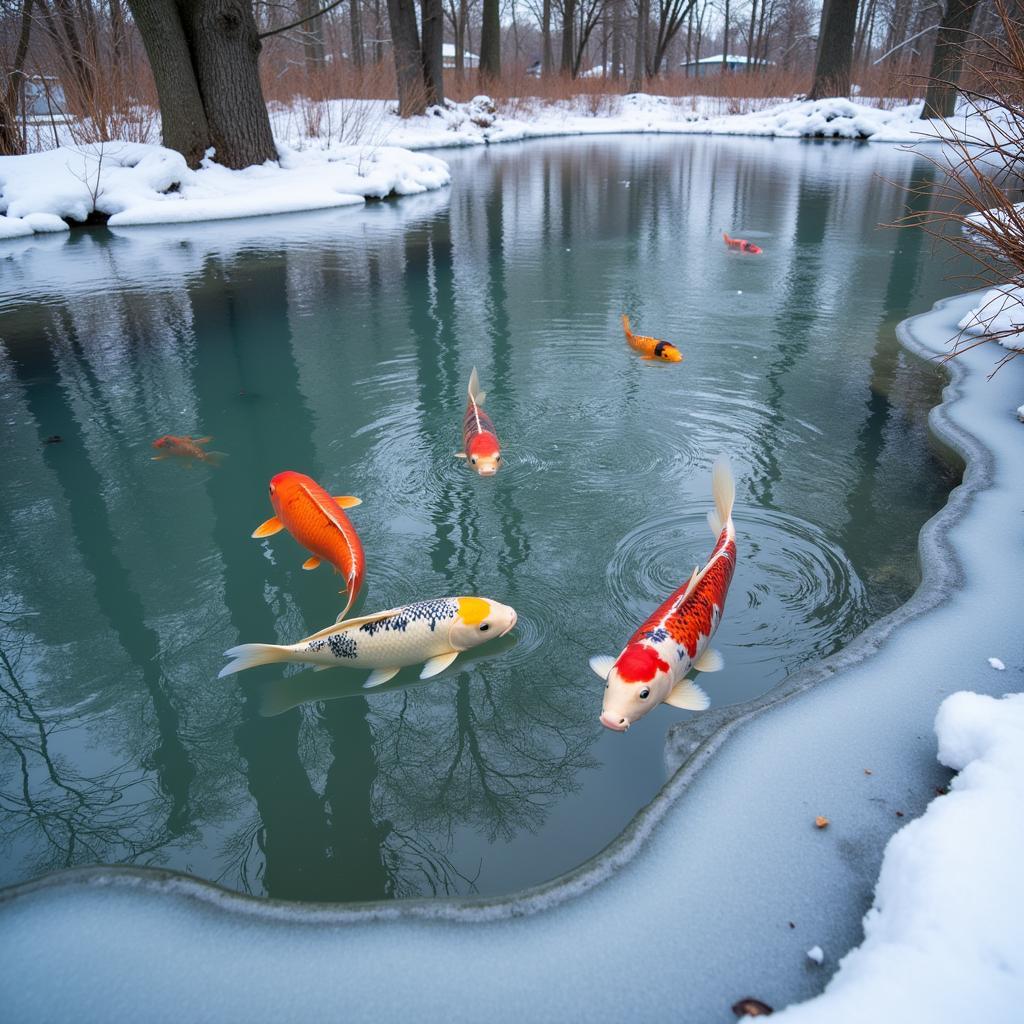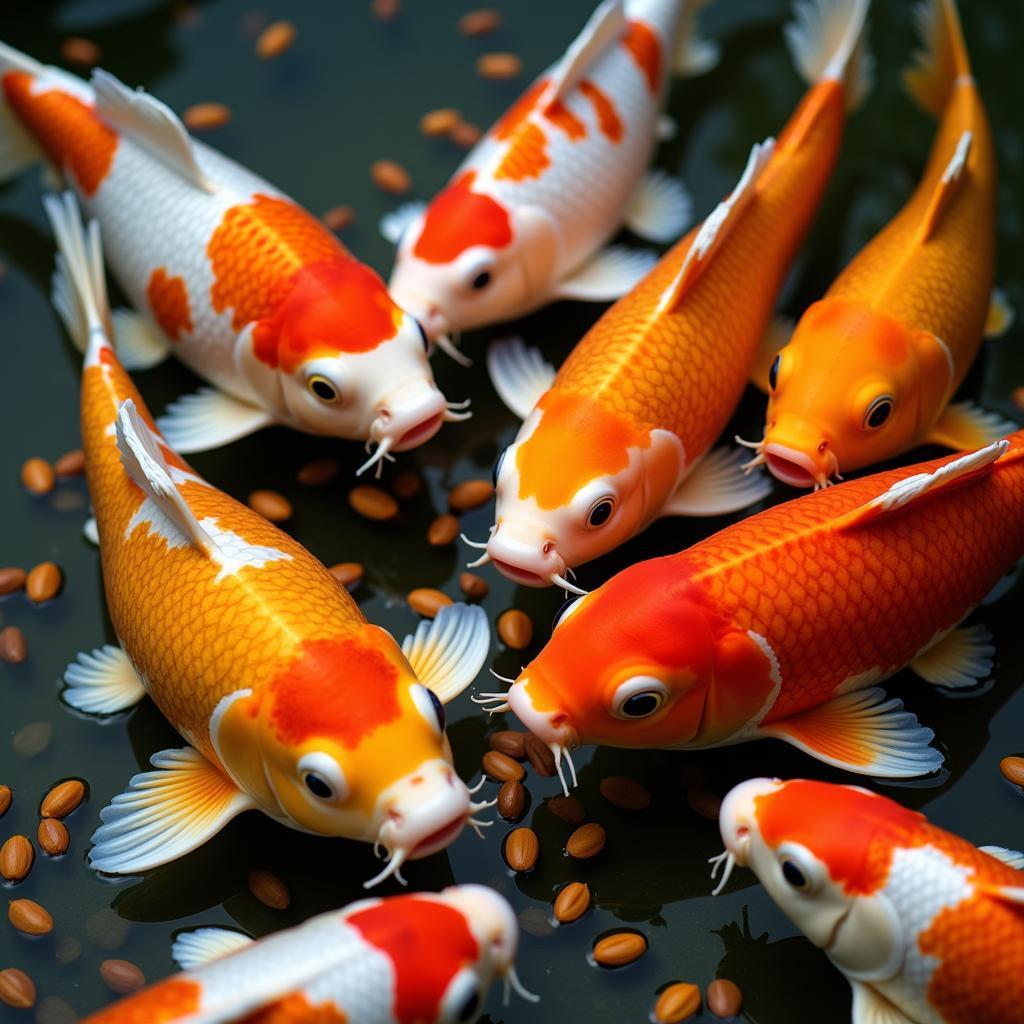Koi are beautiful, vibrant creatures that can bring a lot of joy to your backyard pond. But as the weather turns colder and winter approaches, you might be wondering how these changes affect your finned friends, especially their dietary needs. One of the most common questions koi keepers have is, “How Long Can Koi Go Without Food In Winter?”
The answer, like many things in life, is: it depends.
 Koi fish swimming in a pond during winter
Koi fish swimming in a pond during winter
Understanding Koi Metabolism in Winter
Koi are cold-blooded animals, which means their body temperature fluctuates with the environment. As the water temperature drops below 50°F (10°C), koi metabolism slows down significantly. They become less active and enter a state similar to hibernation, though not as deep as mammals experience. This state is called “torpor.”
During torpor, koi require significantly less food. In fact, they can survive for several weeks without eating anything at all.
Factors Influencing Koi Fasting Time
While koi are generally capable of prolonged fasting in winter, several factors can influence the exact duration they can comfortably go without food:
- Water Temperature: The colder the water, the slower the metabolism, and the longer a koi can go without food.
- Koi Age and Size: Younger and smaller koi tend to have faster metabolisms, even in cold water. They might require supplemental feeding for a shorter period compared to larger, older fish.
- Overall Health: Healthy koi in good body condition can withstand longer periods without food compared to fish with underlying health issues.
 Koi fish eagerly consuming food pellets
Koi fish eagerly consuming food pellets
When to Stop Feeding Koi in Winter
The general rule of thumb is to stop feeding your koi when the water temperature consistently stays below 50°F (10°C). However, it’s essential to observe your fish. If you notice them becoming lethargic or losing a significant amount of weight, you might need to supplement their diet with small amounts of easily digestible food.
Choosing the Right Winter Food for Koi
If you determine that your koi require supplemental feeding during winter, opt for cheap pond fish food specifically formulated for lower temperatures. These foods are typically wheat-based and are easier for koi to digest in cold water. Avoid high-protein foods, as they can be difficult for koi to break down during winter.
Spring Feeding: A Gradual Transition
As water temperatures begin to rise above 50°F (10°C) in spring, your koi will gradually come out of torpor. Start by offering them small amounts of food once a day and gradually increase the quantity and frequency as the water warms up further. Remember to monitor their eating habits and adjust the feeding schedule accordingly.
Conclusion
Understanding your koi’s needs during the colder months is crucial for their well-being. While they are remarkably resilient creatures capable of enduring extended periods without food in winter, careful monitoring and adjustments to their feeding schedule based on water temperature and their overall health are key to ensuring they thrive year-round.